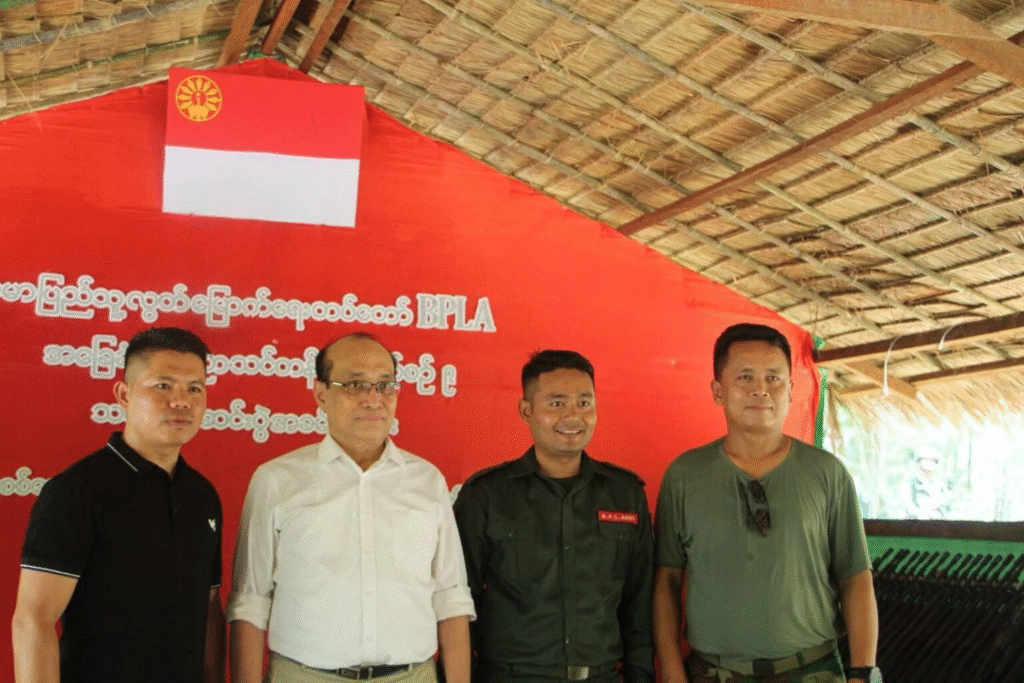Myanmar Spring Chronicle – June 23 View
(MoeMaKa, June 24, 2025):
Inter-ethnic Armed Conflicts and Shan State
In recent days, the Shan Herald Agency published a commentary article titled “Partial Inter-ethnic Conflict Resolution in Shan State,” written by political analyst Sai Wansai, which explores efforts toward resolving tensions among ethnic armed groups in Shan State.
In his article, Sai Wansai highlights three key developments:
-
A dialogue between the Kokang armed group (MNDAA) and the Shan State Progress Party/SSA (SSPP/SSA) has led to a partial resolution of their conflict.
-
A statement from a member of the Chin Brotherhood mentions that territorial and ethnic rights disputes among allies will be postponed until after the military dictatorship is removed — with the expectation that political dialogue will follow.
-
A recent graduation ceremony by the BPLA (Burma People’s Liberation Army) saw cooperation among the NUG/PDF, TNLA, and other local defense forces, suggesting signs of growing unity.
Sources of Inter-ethnic Armed Conflict
Conflicts between ethnic armed organizations often arise due to:
-
Territorial control disputes
-
Competing road checkpoints and taxation
-
Revenue collection in towns and villages
-
Forced recruitment or military conscription in disputed areas
These issues are particularly common in Shan State, where multiple ethnic groups coexist. While such conflicts are not new, they have intensified since the 2021 military coup, as various armed groups expanded their territorial control by seizing areas previously held by the junta.
As these armed groups gain power, friction over control, resources, and authority has escalated.
Post-1027 Operation Landscape in Shan State
After the first and second waves of Operation 1027, the territorial map of Shan State shifted significantly. Even among groups that coordinated during the operation — particularly members of the Three Brotherhood Alliance — skirmishes have erupted at the lower levels.
Notable recent clashes include:
-
Between SSPP/SSA and MNDAA
-
Between KIA and TNLA
Most recently, a new armed clash between TNLA and SSPP/SSA occurred in Mongmit Township of northern Shan State.
While Operation 1027 involved swift and coordinated attacks that successfully overran junta-held towns and regions, conflicts have since emerged over who gets to administer and control these areas.
The Role of China and Changing Objectives
The momentum of Operation 1027 was curtailed in part by China’s diplomatic and economic pressure, especially in regard to trade routes and strategic infrastructure. MNDAA’s decision to hand over Lashio to the junta was seen as a turning point.
Now, the focus for many ethnic armed groups appears to be shifting:
-
From defeating the junta outright
-
Toward consolidating control over territories that the junta can no longer reclaim
The central question has become: Which group has the right to govern these contested territories?
Clashing Claims: Armed Might vs. Ethnic Representation
Some believe that the group who fought and conquered an area by force has the right to govern it. Others argue that ethnic representation, population ratio, and historical residence should determine who governs.
This has fueled a new phase of conflict, especially in Shan State — which makes up about a quarter of Myanmar’s total land area and is home to at least a dozen ethnic groups.
These include the Shan, Pa-O, Palaung, Wa, Kokang, Lahu, Lisu, Danu, Taungyoe, and Intha, among others. Several of these groups, such as the Shan, Pa-O, Wa, Kachin, and Kokang, have long-established armed organizations and controlled territories.
Ethnic Sovereignty and the Future of Federal Democracy
For many ethnic groups, preserving cultural identity and regional autonomy is just as — or even more — important than the broader struggle for democracy. That’s why the vision of a federal democratic union must address not only the defeat of the junta, but also the dangers of militarized ethnic nationalism and extreme identity politics.
The Spring Revolution of 2021 created new momentum and unity among diverse groups. But if this opportunity is not accompanied by restraint, accountability, and inclusive governance, the revolution risks collapsing into a new cycle of armed ethnic fragmentation — rather than building a genuine federal democratic union.

